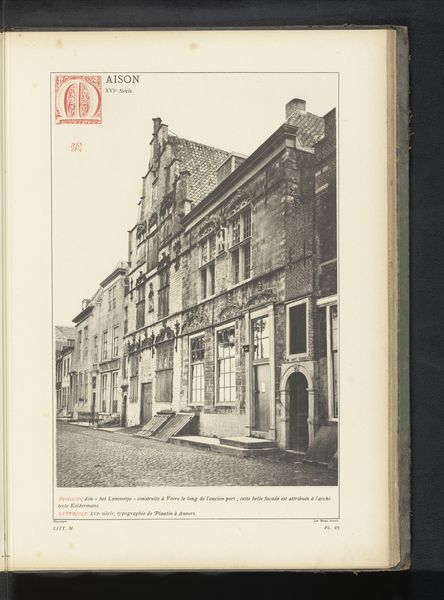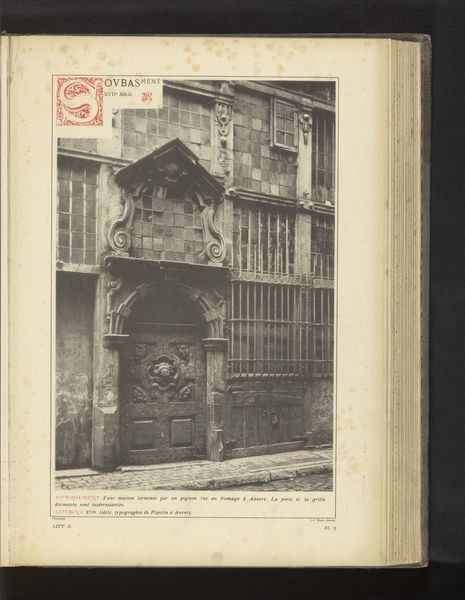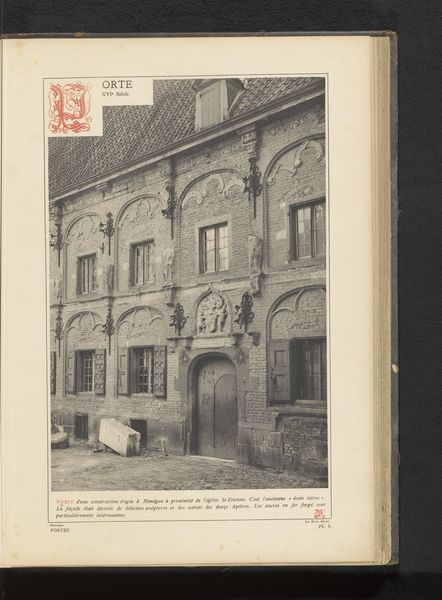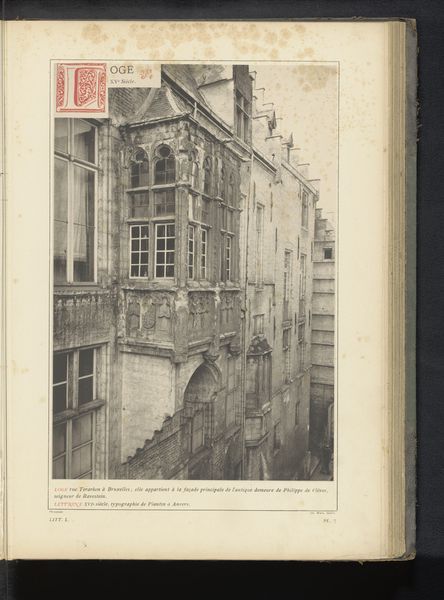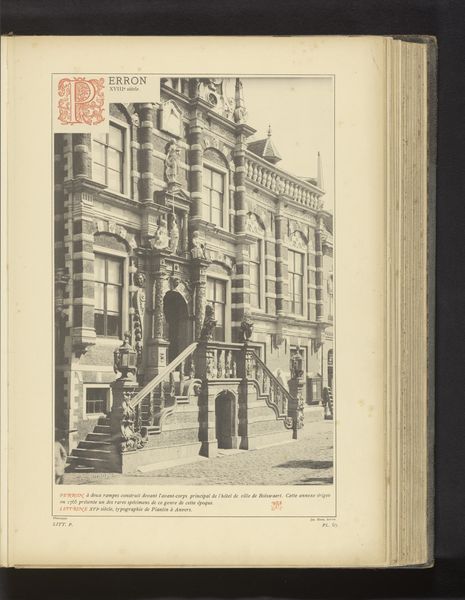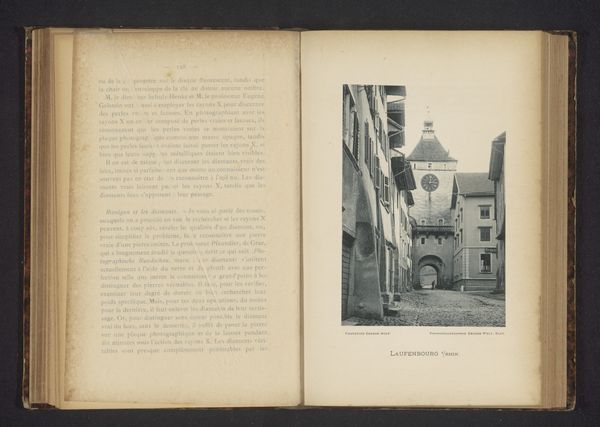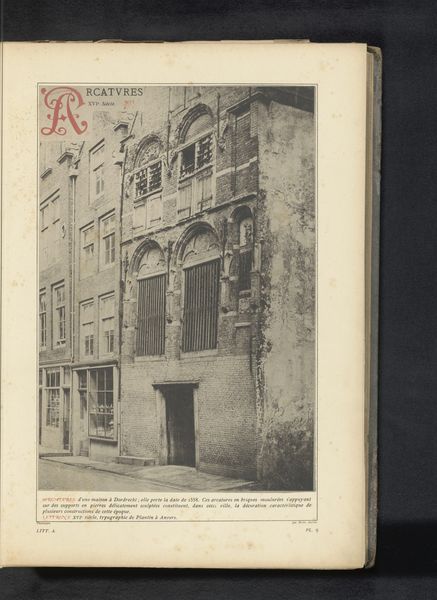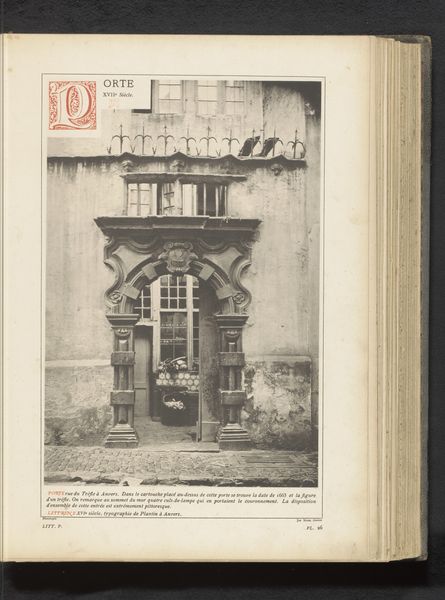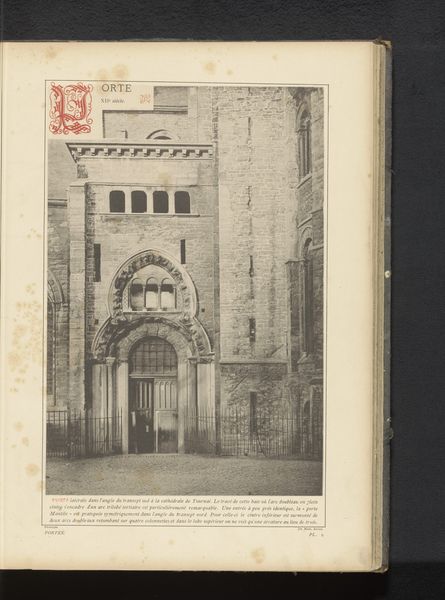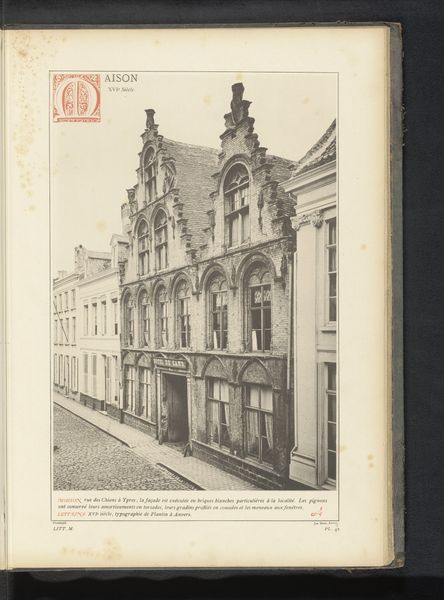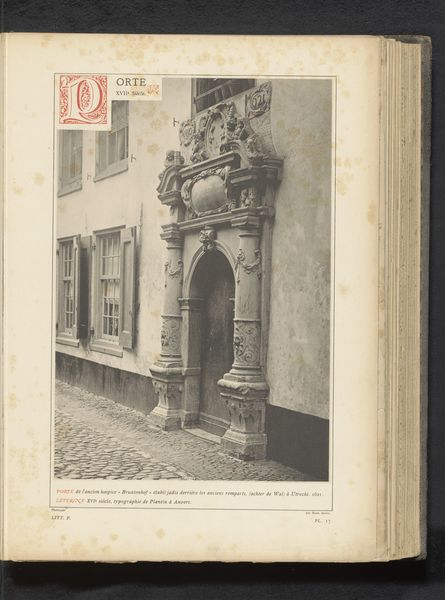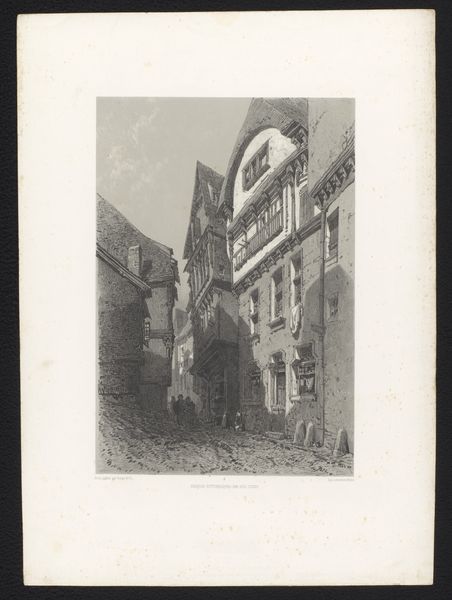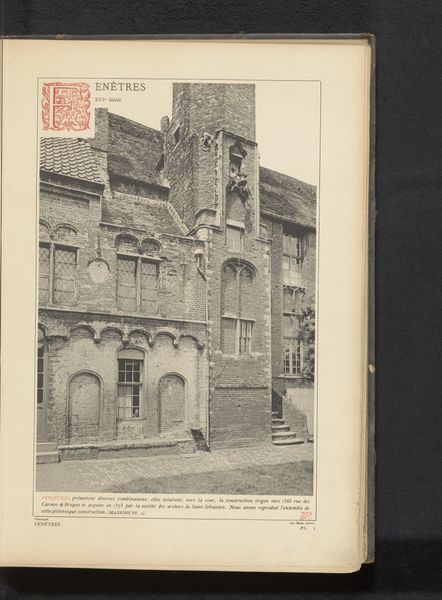
print, photography
# print
#
photography
#
cityscape
Dimensions: height 338 mm, width 227 mm
Copyright: Rijks Museum: Open Domain
Curator: This cityscape print, “Detail van Het Steen te Antwerpen,” captures a sliver of Antwerp's history from before 1880, attributed to an anonymous artist. What do you make of this visual fragment? Editor: Immediately, I’m struck by the somber, almost oppressive feeling. The monochrome palette lends it a sense of weight, of stories etched into the very stones we’re looking at. The way the buildings crowd the frame gives it a claustrophobic feel, a palpable sense of confinement. It has a sense of what Walter Benjamin named "aura." Curator: Yes, it’s heavy. "Het Steen" translates to "The Stone," a fittingly austere name, especially knowing it initially functioned as a prison. It’s compelling how the print, a photograph reproduced as print media, transforms it— layers of mediation between us and the building itself. This resonates so much today, right? We only access to history via screens and digital media. Editor: Exactly. And prisons always have an intricate social history, functioning as instruments of power and punishment for bodies deemed as threats. What power does this image exert as we are seeing this captured moment? Is this a photograph of a building, or is this about power, the gaze, control, memory? Curator: The facade marked 'Musee d'Antiquites' speaks volumes, though, doesn’t it? A museum of antiquities literally attached to the old prison. This photograph somehow manages to illustrate and capture the history it bears within its frame. I am wondering: who made this photograph, and what does that suggest? Editor: Placing a "museum" at a location formerly dedicated to "prisoners" presents a troubling ethical conflict in contemporary museology. As viewers of this photograph, we have the ability to interpret Het Steen through diverse lenses and contemplate the layers and historical narratives it entails, thereby instigating critical dialogues about institutional practices of remembering and forgetting, inclusion and exclusion. Curator: Well, that is quite thought-provoking to consider these themes embedded in something as apparently simple as an architectural photograph. A somber fragment imbued with power, stories, and endless dialogues for the future. Editor: A fitting place to end our conversation, perhaps. It is so exciting to unveil and address a whole plethora of political dimensions behind a mere picture.
Comments
No comments
Be the first to comment and join the conversation on the ultimate creative platform.
